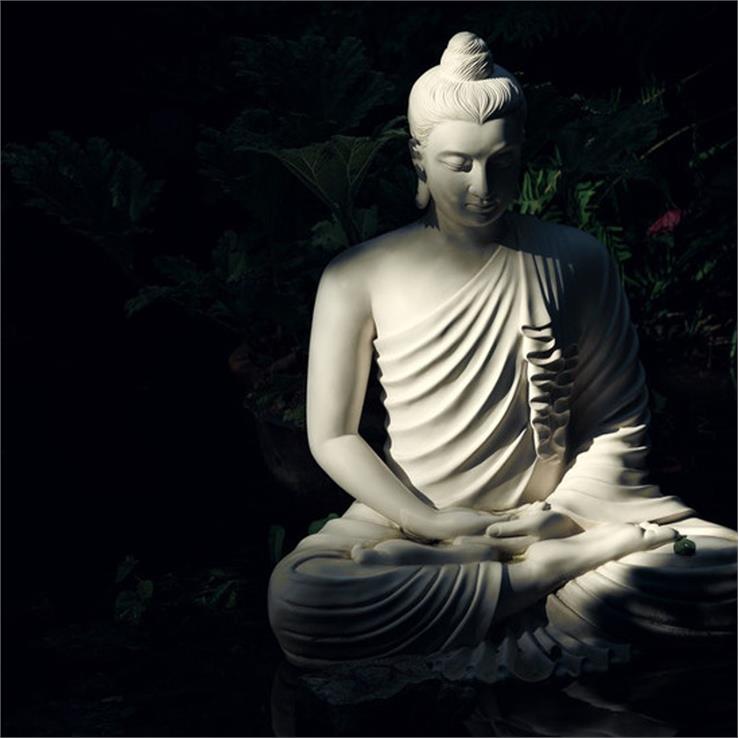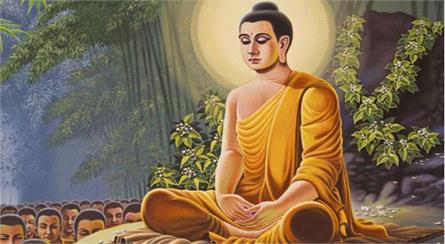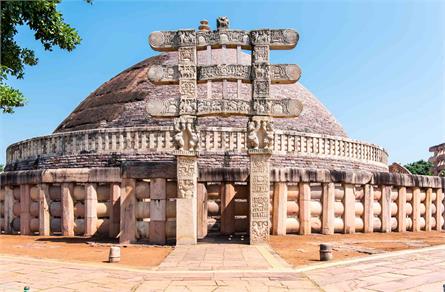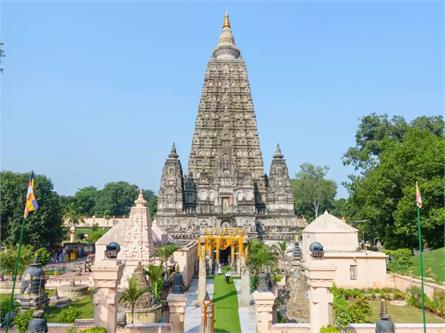Siddhartha Gautama | The Buddha | The Awakened One

Siddhartha Gautama, the illustrious figure behind Buddhism, emerged from the serene landscapes of Lumbini, Nepal, during the 6th century BCE. Born into luxury as the son of a king, Suddhodana, and queen Maya, Siddhartha enjoyed a life of extravagant privilege.
Education of Siddhartha Gautama
Siddhartha's education was wider than just Vedas and Upanishads. Under the guidance of Guru Vishwamitra, he also gained expertise in the art of statecraft and warfare. His wrestling, horse racing, bow and arrow, and chariot driving skills were unmatched. At the age of sixteen, he married Yashodhara, and they lived in a grand palace built by his father, where they welcomed their son, Rahula. However, Siddhartha's priorities shifted towards finding true happiness and peace through renunciation, which led him to leave his family behind.
At 29, Siddhartha decided to leave behind his royal lineage, seeking enlightenment beyond the confines of his palace walls.
Reason for change in Siddharth Gautama
As Siddhartha enjoyed the luxuries and pleasures provided by King Shuddhodhan, he realized that these things could not keep him tied to the world. One day, while taking a walk in the garden, he saw an old man with broken teeth, gray hair, and a crooked body. This encounter was followed by the sight of a patient struggling to walk and then a funeral procession. These scenes made Siddhartha reflect on the fleeting nature of life. On his fourth walk in the garden, he encountered a happy-hearted monk who had renounced all worldly desires. This encounter left a profound impact on Siddhartha.
Journey of Siddhartha Gautama
After leaving his wife, son, and kingdom, Siddhartha sets out on a journey of self-discovery. He traveled to Rajagriha, where he begged for alms, and eventually reached Aalar Kalam and Uddaka Ramaputra, where he learned yoga and meditation. However, he still felt dissatisfied and continued his journey to Uruvela, where he began various forms of penance.
At first, Siddhartha used to eat only sesame seeds and rice, but eventually, he stopped eating it completely. His body became weak, and he spent six years in penance. He only realized the importance of balance once he heard a song about the middle path. The Buddha's teachings about finding peace through moderation resonated with him, and he realized that excess of anything is not good. Siddhartha understood that the key to enlightenment was rigorous penance and a balanced diet and exercise routine.
Gain of Knowledge
At the age of 35, Siddhartha was meditating under a Peepal tree when he finally attained enlightenment. This resulted from his rigorous penance on the banks of river Niranjana at Bodh Gaya, where he broke his fast by eating kheer from the hands of a girl named Sujata. This woman had come to the Peepal tree to fulfill her vow for her son, and with great respect, she presented Kheer to Siddhartha. Siddhartha felt as if the tree god himself was sitting in his body to receive worship. From that moment on, he became known as 'Buddha', meaning 'the enlightened one.' The Peepal tree under which Siddhartha attained enlightenment was called Bodhi tree, and the place adjacent to Gaya was called Bodh Gaya.
Dedication of Life
At the age of 80, he dedicated his life to spreading his religion in Pali, the language of the common people. His simple teachings quickly gained popularity. After meditating and contemplating the nature of the Dharma under the Bodhi Tree for four weeks, the Buddha began to share his Dharma. He gave his first sermon on the full moon day of Ashadh at Mrigadava, now Sarnath, near Kashi. The Buddha's first five disciples became his followers, and he sent them out to spread the word. Buddha's mother, Mahaprajapati Gautami, was the first woman to join the Buddhist sect. Ananda was the Buddha's favorite disciple, and he often addressed his sermons to him.
Departure of Buddha
According to the Mahaparinirvana Sutta of the Pali canon, at the age of 80, the Buddha announced that he would soon depart for Parinirvana or Moksha or death. He ate his last meal, which was a gift from a blacksmith named Kunda, and it made him seriously ill. The Buddha instructed his disciple Ananda to reassure Kunda that he had done nothing wrong. Buddha also mentioned that the food was wonderful.
Four Noble Truths
The Buddha's teachings rest upon two fundamental pillars: the Four Noble Truths and the Eightfold Path, providing a comprehensive roadmap to liberation from suffering.
1. Life is Suffering
The Buddha's profound insight recognized that suffering is an intrinsic part of human existence.
2. The Cause of Suffering is Desire
He identified that attachment and unbridled desires are the root causes of human suffering.
3. Suffering Can Be Ended
The Buddha's message offers hope by proclaiming that suffering can be transcended.
4. The Path to Ending Suffering is the Noble Eightfold Path
He outlined a precise path that leads to the cessation of suffering.
Noble Eightfold Path
1. Right Understanding
Grasping the true nature of reality and suffering.
2. Right Thoughts
Cultivating wholesome and compassionate thoughts.
3. Right Speech
Speaking truthfully and compassionately.
4. Right Action
Engaging in ethical and moral conduct.
5. Right Livelihood
Pursuing a livelihood that does not harm others.
6. Right Effort
Exerting oneself on the path to enlightenment.
7. Right Mindfulness
Developing a keen awareness of one's thoughts and actions.
8. Right Concentration
Cultivating focused and undistracted mental states.
Buddhism
During the time of Buddha, the number of monks increased rapidly due to his teachings and sermons. Kings and emperors also became his disciples. This led to the establishment of the Buddhist Sangha, which welcomed both men and women. Buddha sent his monks to spread his teachings far and wide for the good of all. Emperors like Ashoka also played an important role in spreading Buddhism to other countries. Today, Buddhism is the majority religion in many countries, including China, Japan, Korea, Mongolia, Burma, Thailand, Indo-China, and Sri Lanka.









